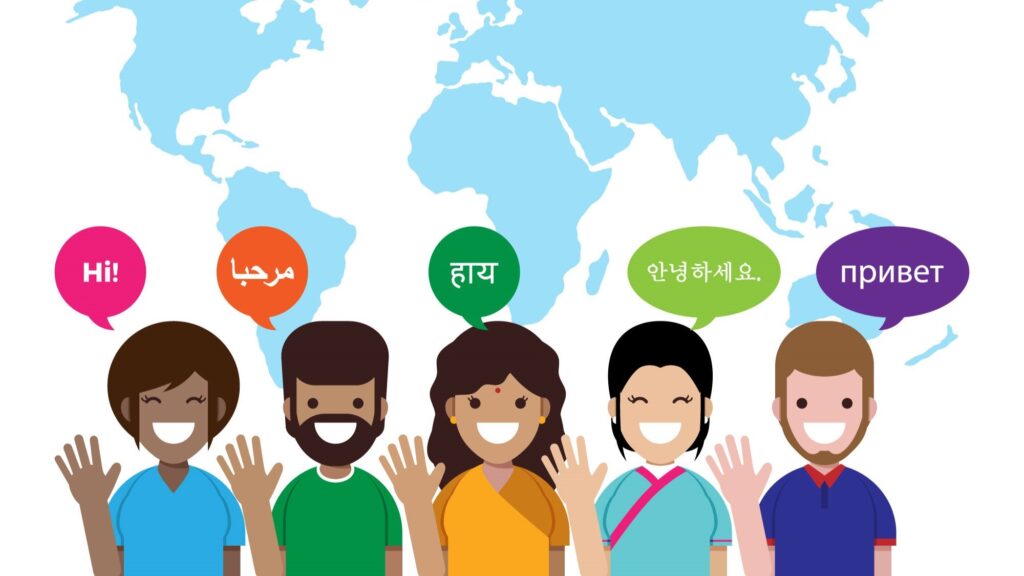
The global e-learning market has grown rapidly in recent years and shows no signs of slowing down. Valued at around $342.4 billion in 2024, it is projected to reach an impressive $682.3 billion by 2033, growing at a CAGR of 8% (The Business Research Company, IMARC). This surge is fueled by increased internet access, mobile device usage, and the shift towards flexible, on-demand education. As this growth continues, the need for translation becomes increasingly evident to ensure educational content is accessible to diverse global audiences.
One of the most significant drivers of this growth is corporate training. Organizations around the world are turning to online learning platforms to train their employees efficiently. The corporate e-learning sector alone was estimated at $245.5 billion in 2024 and is expected to grow at a 13% CAGR, reaching $462.6 billion by 2027 (Innovito). As companies expand their global footprint, the need for multilingual training becomes increasingly vital.
The Necessity of Translation in E-Learning
The growth of e-learning and need for translation have made language a defining factor in the effectiveness of digital learning. As e-learning spreads across borders, translation enables learning content to be accessible to a wider, more diverse audience.
Reaching a Global Audience
Not all learners are fluent in English, and offering content in just one language limits participation. Translating e-learning content ensures that learners from different linguistic backgrounds can engage, understand, and benefit from the material.
Example – Multinational Corporations
Global enterprises like Microsoft provide internal training programs in multiple languages to ensure all employees, regardless of location, receive the same level of education and onboarding. This approach promotes inclusivity and maximizes learning outcomes.
Enhancing Learner Engagement through Localization
While translation focuses on converting words, localization adapts the entire learning experience to fit the cultural and contextual expectations of the target audience.
Cultural Relevance:
Localized e-learning content aligns with local customs, societal norms, humor, and real-life examples. This makes the learning experience more relatable, helping learners better connect with the content.
Example – Educational Platforms:
Online platforms like Coursera tailor course content to match regional preferences, including date formats, currencies, examples, and images. This level of localization often leads to higher enrollment, better engagement, and improved completion rates in different regions.
Improving Learning Outcomes with Native Language Instruction
The language of instruction significantly influences how well learners absorb and retain knowledge. Learning in a native language results in a deeper understanding and better application of concepts.
Comprehension and Retention:
When learners interact with training materials in their native tongue, they can focus on the subject matter without the distraction of translating in their minds. This leads to stronger retention, higher test scores, and more confident learners.
Example – Public Health Campaigns:
In regions with low literacy or unfamiliarity with certain health practices, translated and localized e-learning modules have helped improve hygiene awareness, nutrition habits, and overall community health. These materials succeeded because they were available in languages people understood best.
The Importance of Functional E-Learning Translation
Beyond language and culture, a strong e-learning translation process includes technical aspects that ensure a smooth and accessible learning experience.
Platform Compatibility:
Translated content must be compatible with different learning management systems (LMS) and work across devices. This ensures a consistent experience for learners everywhere.
Multimedia Integration:
Many e-learning courses use videos, graphics, voiceovers, and quizzes. Effective translation means every component—including subtitles, on-screen text, and audio—needs to be adapted without losing the original intent or instructional value.
Choosing the Right E-Learning Translation Partner

Choosing the right translation service is critical to delivering content that’s accurate, engaging, and culturally appropriate. Key criteria include:
- Subject Matter Expertise: The translation team should be familiar with the educational topic to avoid inaccuracies or misinterpretations.
- Cultural Understanding: Translators must be able to adapt examples and references to suit the local context.
- Technical Capability: The provider should be skilled at handling formats used in e-learning platforms, such as SCORM, xAPI, or HTML5.
- Quality Assurance: A thorough review process ensures the final content is accurate, consistent, and error-free.
- Scalability: The service provider should be equipped to manage projects of varying sizes and across multiple languages.
Why VerboLabs is a Trusted Partner in E-Learning Translation

- Extensive Language Solutions:
VerboLabs offers translation and localization in a wide range of languages, enabling organizations to reach learners in every region they operate. - Experienced Team:
Our specialists include language professionals, technical experts, and instructional content specialists who ensure that every translation project is delivered with clarity and consistency. - Diverse E-Learning Formats:
VerboLabs supports various formats including microlearning, gamified courses, and mobile-first content, making it easier for businesses and educators to reach different types of learners effectively. - Focus on Quality and Security:
We follow rigorous quality assurance practices to maintain high translation standards. All projects are handled under strict confidentiality protocols to protect sensitive information.
Conclusion
The growth of e-learning and need for translation underscores the urgent demand for high-quality localization. As more organizations embrace digital learning, the ability to communicate effectively in multiple languages becomes a competitive advantage. It ensures that training programs and educational content are accessible, understandable, and engaging for all learners—regardless of language or culture.
VerboLabs stands out as a reliable partner for e-learning translation services. With deep expertise, a global language portfolio, and a commitment to excellence, VerboLabs helps organizations deliver content that connects, educates, and inspires worldwide.

Expand your reach, enhance your training, and partner with VerboLabs to take your e-learning content global effectively and confidently.



